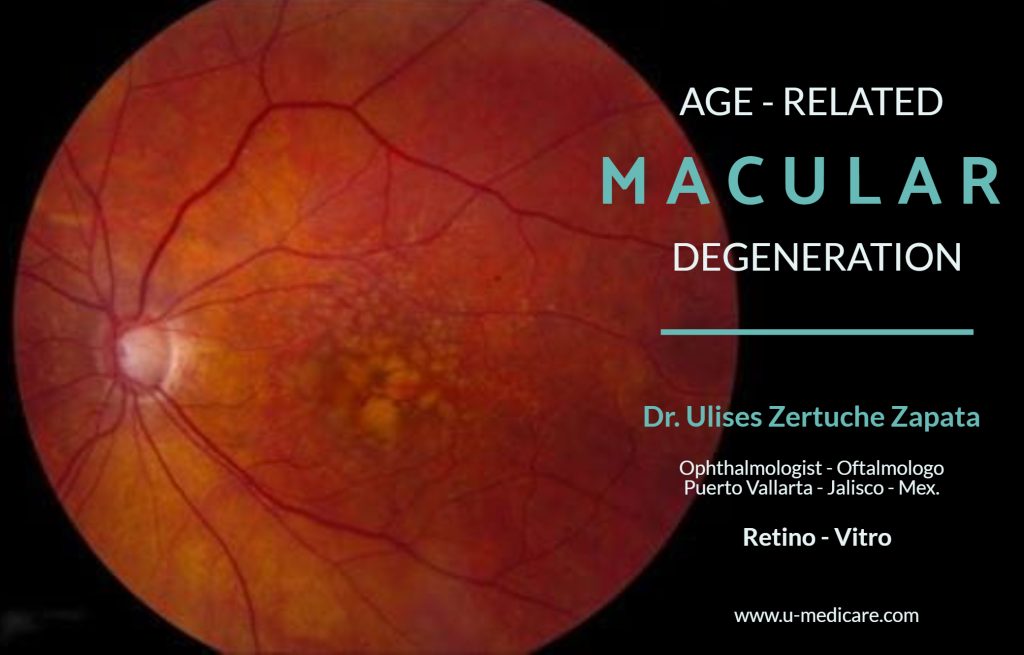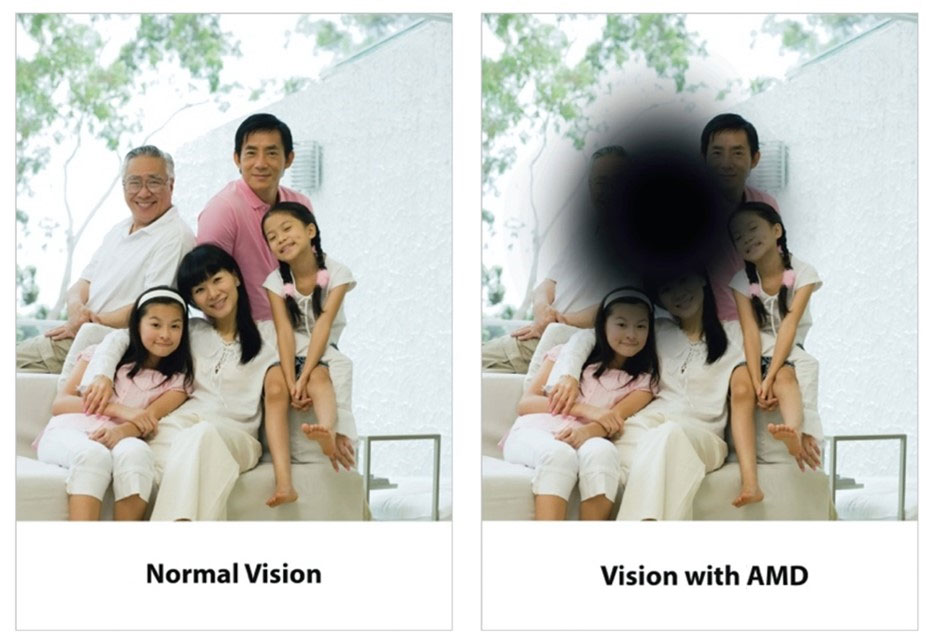
What is Age-Related Macuar Degeneration ( AMD ) ?
Age-related macular degeneration (AMD) is an eye disease that can blur your central vision. It happens when aging causes damage to the macula — the part of the eye that controls sharp, straight-ahead vision. The macula is part of the retina (the light-sensitive tissue at the back of the eye).
AMD is a common condition — it’s a leading cause of vision loss for older adults. AMD doesn’t cause complete blindness, but losing your central vision can make it harder to see faces, read, drive, or do close-up work like cooking or fixing things around the house.
AMD is a common condition — it’s a leading cause of vision loss for older adults. AMD doesn’t cause complete blindness, but losing your central vision can make it harder to see faces, read, drive, or do close-up work like cooking or fixing things around the house.
AMD happens very slowly in some people and faster in others. If you have early AMD, you may not notice vision loss for a long time. That’s why it’s important to get regular eye exams to find out if you have AMD.

What are the symptoms of AMD?
The symptoms of AMD depend on the stage. Dry AMD happens in 3 stages: early, intermediate, and late. AMD is a progressive disease — that means symptoms usually get worse over time.Early dry AMD doesn’t cause any symptoms.
In intermediate dry AMD, some people still have no symptoms. Others may notice mild symptoms, like mild blurriness in their central vision or trouble seeing in low lighting.
In late AMD (wet or dry type), many people notice that straight lines start to look wavy or crooked. You may also notice a blurry area near the center of your vision. Over time, this blurry area may get bigger or you may see blank spots. Colors may also seem less bright than before, and you may have more trouble seeing in low lighting.
Straight lines looking wavy is a warning sign for late AMD. If you notice this symptom, see your eye doctor right away.
How will my eye doctor check for AMD?
Eye doctors can check for AMD as part of a comprehensive dilated eye exam. The exam is simple and painless — your doctor will give you some eye drops to dilate (widen) your pupil and then check your eyes for AMD and other eye problems.
Your doctor may also recommend doing a test called optical coherence tomography (OCT). In an OCT test, your eye doctor will take pictures of the inside of your eye with a special machine.
Optical Coherence Tomography
Contact Dr. Ulises Zertuche Zapata
Specialist in Age-related macular degeneration (AMD)
Vallarta Medical Center Hospital
TORRE MEDICA 2d Floor . Av Los Tules No. 136, Díaz Ordaz, 48310 Puerto Vallarta, Jal.
Llame para hacer una cita
011 ( +52 ) 322 229 03 10

